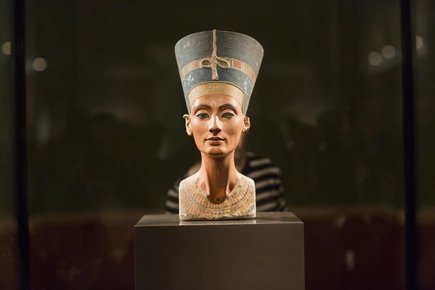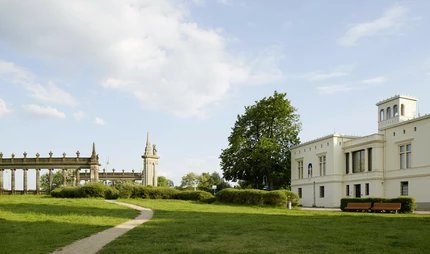
Marble House
Lakeside Palace
Silesian marble and red brick lend the palace its romantic aura, although the lakeshore location does not hurt, either.
The Marble House stands in Potsdam's Neuer Garten along with the later Cecilienhof Palace, which stands directly on the shore.
The only surviving early neo-classical palace in Prussia
Berlin and the surrounding state of Brandenburg reflect their former role as the seat of the kings of Prussia, later to become the German emperors. The palaces across the region are truly special, with each palace a unique architectural statement. The Prussians were creative and kept up with the latest fashions in their building projects. Charlottenburg's Rococo style and Cecilienhof's Neo-Gothic allure are just two examples.
emperor Frederick William II asked Carl von Gontard to build a two-storey cubic building topped with a round cupola in the Neuer Garten, making it the first and only royal palace in Prussia to be built in the early Neo-Classical style. The rectangular side wings were added a little later when the king found the palace too small for his needs.
Transitional home for future kings and emperors
In the 1830s, Prince Wilhelm, later to become the first emperor of Germany, moved into the palace with his wife Augusta. But they stayed only briefly, as they waited for the completion of their own palace at Babelsberg. Another Prince Wilhelm, later emperor Wilhelm II, also spent some years of his life in the Marmorpalais (Marble House), residing there from 1881 until his accession to the throne in 1888. The last royals to live at Marmorpalais (Marble House) were the eldest son of emperor Wilhelm II and his wife Cecilie. Both moved in to the palace in 1904, although they relocated to the Cecilienhof across the garden thirteen years later.
Casino Royal
As you might expect, World War II had its impact on the palace. An incendiary bomb hit the north wing and a grenade damaged the main building. The former palace was turned into a casino and an army museum after the war.
Discover the highlights of the castle
A view from the terrace to the right and you will see what looks like a small ruined temple. This folly actually housed the palace kitchens. This was designed by Carl Gotthard Langhans, who also designed Berlin's iconic Brandenburg Gate. The prepared foods were taken by underground tunnel to the royal dining room known as the Grotto Hall. The Grotto Hall is another spectacular room in the palace. On warm summer evenings, when the doors were opened wide out onto the terrace, the king would dine here with his guests.

Another marvel is the palace's extensive collection of Wedgwood china. There are also Nibelung-related motifs to be found throughout the palace.
Ticket tip
Upon presentation of a ticket from the Stiftung Preußische Schlösser und Gärten Berlin-Brandenburg
(the castles Marble House, Neues Palais and picture gallery, except the combined ticket sanssouci+)
you get 25% discount on a day ticket of the Museum Barberini (valid 3 days) - and vice versa.
Opening Hours
Open all year round



